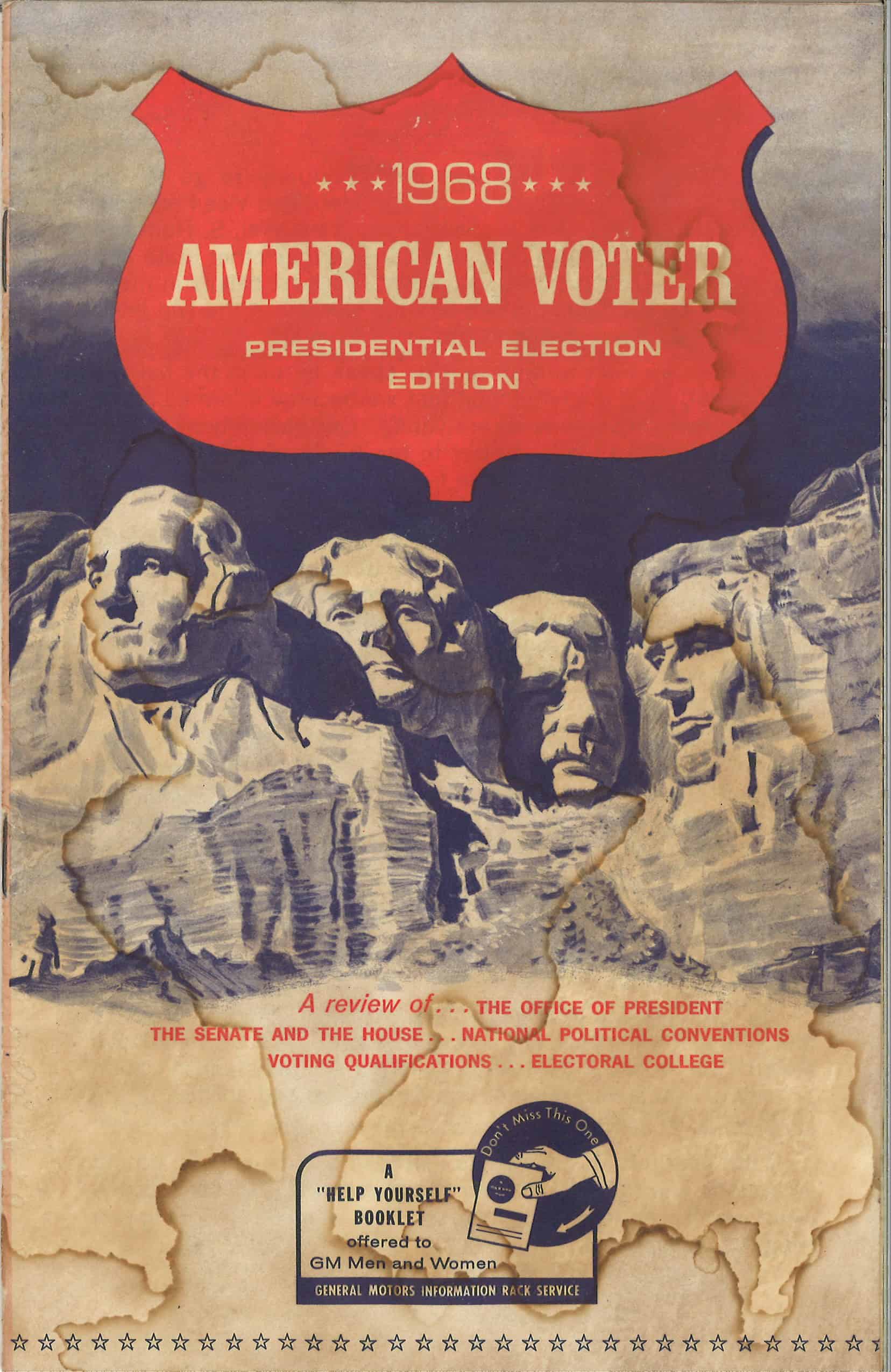Note: This blog was first posted in September. The message in it is an important reminder on Election Day. Your Voice is Your Vote. Worth a re-read today.
You never know what treasures can be hidden behind walls…until you remove them. That happened at my house recently. While it wasn’t a bag of money or some vintage jewelry, the treasure found behind the walls offered a unique glimpse of the past in an eerily appropriate way considering my SEMCOG job.
The booklet that came out of the wall is titled 1968 American Voter: Presidential Election Edition. That year is significant to us at SEMCOG. It was the year we were founded. We’ve been celebrating our history and our significance as a membership organization of local governments all year.

So, how do the messages in the 1968 booklet compare to our world 50 years later?
The booklet’s introduction is “The Least We Can Do Is Vote!” That message is still important today, and it’s one of SEMCOG’s key messages – that your voice is your vote. Here are the percentages of eligible voters who voted then and now:
- 1964: 62%
- 1968: 61%
- 2016 58%
(The 26th Amendment to the Constitution gave 18-year-olds the right to vote in 1971; the first presidential election in which they could vote was 1972.)
Quoting the 1968 booklet: “Our nation needs informed voters. It needs voters who realize that voting is a responsibility as well as a right….It needs your voice through your vote.” We send that same message today.
In 1968, the American Voter said, “The men we elect to represent us speak for us in the halls of government. It is therefore vital that we become informed about the candidates for whom we are voting. Our government can be no better than the men we elect to run it. Electing officials who further good government and the freedom it offers is the responsibility of the American Voter.”
In today’s world and in my position in Communications, we wouldn’t write the above paragraph using the word men to represent all of us. It made me pause and do some research on the make-up of Congress before the 1968 election. Was it truly all men back then? No, but close. There was one female senator – Margaret Chase Smith (R-Maine) – and seven congresswomen in the 89th Congress in 1966. That’s a total of eight women out of 535 available Congressional seats.
What about today? The 115th Congress includes 23 female senators and 84 congresswomen, for a total of 107 out of 535 available Congressional seats. Michigan has three of the 107 – Senator Debbie Stabenow, and Congresswomen Debbie Dingell and Brenda Lawrence.
While much has changed in 50 years in how we do our jobs at SEMCOG, there is one constant for which we are extremely proud – addressing regional challenges and strengthening the abilities of local governments. Or simply put, good government. Just as in 1968, one of the important reasons to vote back then is what we still aspire to 50 years later. A nice reminder!

Leave a Reply